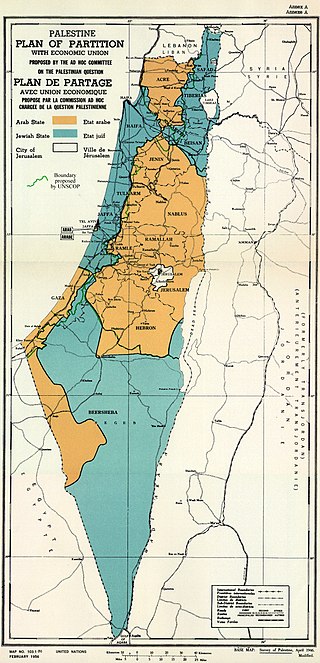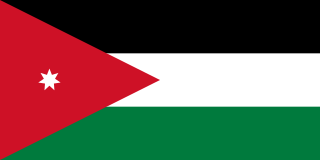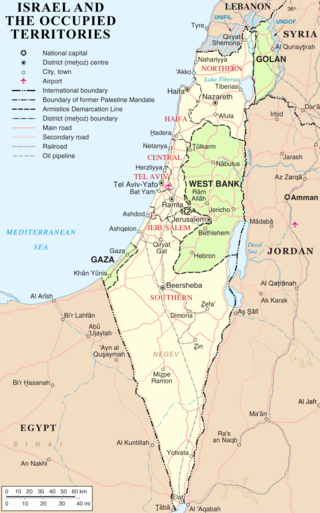
The history of Israel covers an area of the Southern Levant also known as Canaan, Palestine or the Holy Land, which is the geographical location of the modern states of Israel and Palestine. From a prehistory as part of the critical Levantine corridor, which witnessed waves of early humans out of Africa, to the emergence of Natufian culture c. 10th millennium BCE, the region entered the Bronze Age c. 2,000 BCE with the development of Canaanite civilization, before being vassalized by Egypt in the Late Bronze Age. In the Iron Age, the kingdoms of Israel and Judah were established, entities that were central to the origins of the Jewish and Samaritan peoples as well as the Abrahamic faith tradition. This has given rise to Judaism, Samaritanism, Christianity, Islam, Druzism, Baha'ism, and a variety of other religious movements. Throughout the course of human history, the Land of Israel has seen many conflicts and come under the sway or control of various polities and, as a result, it has historically hosted a wide variety of ethnic groups.

Israeli settlements, also called Israeli colonies, are the civilian communities built by Israel throughout the Israeli-occupied territories. They are populated by Israeli citizens, almost exclusively of Jewish identity or ethnicity, and have been constructed on lands that Israel has militarily occupied since the Six-Day War in 1967. The international community considers Israeli settlements to be illegal under international law, but Israel disputes this. In 2024, the International Court of Justice (ICJ) found that Israel's occupation was illegal and ruled that Israel had "an obligation to cease immediately all new settlement activities and to evacuate all settlers" from the occupied territories. The expansion of settlements often involves the confiscation of Palestinian land and resources, leading to displacement of Palestinian communities and creating a source of tension and conflict. Settlements are often protected by the Israeli military and are frequently flashpoints for violence against Palestinians. Furthermore, the presence of settlements and Jewish-only bypass roads creates a fragmented Palestinian territory, seriously hindering economic development and freedom of movement for Palestinians.

Jerusalem is a city in the Southern Levant, on a plateau in the Judaean Mountains between the Mediterranean and the Dead Sea. It is one of the oldest cities in the world, and is considered holy to the three major Abrahamic religions—Judaism, Christianity, and Islam. Both the State of Israel and the State of Palestine claim Jerusalem as their capital city. Israel maintains its primary governmental institutions there, and the State of Palestine ultimately foresees it as its seat of power. Neither claim is widely recognized internationally.

The 1948 Arab–Israeli War, also known as the First Arab–Israeli War, followed the civil war in Mandatory Palestine as the second and final stage of the 1948 Palestine war. The civil war became a war of separate states with the Israeli Declaration of Independence on 14 May 1948, the end of the British Mandate for Palestine at midnight, and the entry of a military coalition of Arab states into the territory of Mandatory Palestine the following morning. The war formally ended with the 1949 Armistice Agreements which established the Green Line.

The Israeli–Palestinian conflict is an ongoing military and political conflict about land and self-determination within the territory of the former Mandatory Palestine. Key aspects of the conflict include the Israeli occupation of the West Bank and Gaza Strip, the status of Jerusalem, Israeli settlements, borders, security, water rights, the permit regime, Palestinian freedom of movement, and the Palestinian right of return.

The United Nations Partition Plan for Palestine was a proposal by the United Nations, which recommended a partition of Mandatory Palestine at the end of the British Mandate. On 29 November 1947, the UN General Assembly adopted the Plan as Resolution 181 (II). The resolution recommended the creation of independent Arab and Jewish States linked economically and a Special International Regime for the city of Jerusalem and its surroundings.

East Jerusalem is the portion of Jerusalem that was held by Jordan after the 1948 Arab–Israeli War, as opposed to West Jerusalem, which was held by Israel. Under international law, East Jerusalem is considered part of the West Bank, and Palestinian territories, and under illegal occupation by Israel. Many states recognize East Jerusalem as the capital of the State of Palestine, whereas other states assert that East Jerusalem "will be the capital of Palestine", while referring to it as "an occupied territory". In 2020, East Jerusalem had a population of 595,000 inhabitants, of which 361,700 (61%) were Palestinian Arabs and 234,000 (39%) Jewish settlers. Israeli settlements in East Jerusalem are illegal under international law and in the eyes of the international community.

The Israeli West Bank barrier, comprising the West Bank Wall and the West Bank fence, is a separation barrier built by Israel along the Green Line and inside parts of the West Bank. Israel describes the wall as a necessary security barrier against Palestinian political violence; whereas Palestinians describe it as an element of racial segregation and a representation of Israeli apartheid, who often call it "Wall of Apartheid". At a total length of 708 kilometres (440 mi) upon completion, the route traced by the barrier is more than double the length of the Green Line, with 15% of its length running along the Green Line or inside Israel, and the remaining 85% running as much as 18 kilometres (11 mi) inside the West Bank, effectively isolating about 9% of the land and approximately 25,000 Palestinians from the rest of the Palestinian territory.

The Jordanian administration of the West Bank officially began on April 24, 1950, and ended with the decision to sever ties on July 31, 1988. The period started during the 1948 Arab-Israeli War, when Jordan occupied and subsequently annexed the portion of Mandatory Palestine that became known as the West Bank, including East Jerusalem. The territory remained under Jordanian control until it was occupied by Israel during the 1967 Six Day War and eventually Jordan renounced its claim to the territory in 1988.
The population of the region of Palestine, which approximately corresponds to modern Israel and the Palestinian territories, has varied in both size and ethnic composition throughout the history of Palestine.

The region of Palestine, also known as Historic Palestine, is a geographical area in West Asia. It includes modern-day Israel and the State of Palestine, as well as parts of northwestern Jordan in some definitions. Other names for the region include Canaan, the Promised Land, the Land of Israel, or the Holy Land.
The International law bearing on issues of Arab–Israeli conflict, which became a major arena of regional and international tension since the birth of Israel in 1948, resulting in several disputes between a number of Arab countries and Israel.
The Green Line or 1949 Armistice border is the demarcation line set out in the 1949 Armistice Agreements between the armies of Israel and those of its neighbors after the 1948 Arab–Israeli War. It served as the de facto borders of the State of Israel from 1949 until the Six-Day War in 1967, and continues to represent Israel’s internationally recognized borders with the two Palestinian territories: the West Bank and the Gaza Strip.

Israel has occupied the Palestinian territories and the Golan Heights since the Six-Day War of 1967. It previously occupied the Sinai Peninsula and southern Lebanon as well. Prior to 1967, the Palestinian territories was split between the Gaza Strip controlled by Egypt and the West Bank by Jordan, while the Sinai Peninsula and the Golan Heights are parts of Egypt and Syria, respectively. The Israeli occupation of the Palestinian territories and the Golan Heights, where Israel had transferred its parts of population there and built large settlements, is the longest military occupation in modern history.
The history of the Jews and Judaism in the Land of Israel begins in the 2nd millennium BCE, when Israelites emerged as an outgrowth of southern Canaanites. During biblical times, a postulated United Kingdom of Israel existed but then split into two Israelite kingdoms occupying the highland zone: the Kingdom of Israel (Samaria) in the north, and the Kingdom of Judah in the south. The Kingdom of Israel was conquered by the Neo-Assyrian Empire, and the Kingdom of Judah by the Neo-Babylonian Empire. Initially exiled to Babylon, upon the defeat of the Neo-Babylonian Empire by the Achaemenid Empire under Cyrus the Great, many of the Jewish exiles returned to Jerusalem, building the Second Temple.

Israeli citizenship law details the conditions by which a person holds citizenship of Israel. The two primary pieces of legislation governing these requirements are the 1950 Law of Return and 1952 Citizenship Law.

Norman de Mattos Bentwich was a British barrister and legal academic. He was the British-appointed attorney-general of Mandatory Palestine and a lifelong Zionist.
Justus Reid Weiner (1950-2020) was a human rights lawyer and Distinguished Scholar in Residence at the Jerusalem Center for Public Affairs. He was the author of numerous publications. Weiner also lectured widely in various countries, and was a visiting assistant professor at Boston University School of Law. He was a member of the Israel and New York Bar Associations. Previously, he practiced law as an associate in the litigation department of the international law firm White & Case in New York City. Weiner also served as a senior attorney at the Israel Ministry of Justice, specializing in human rights and other facets of public international law.

Mandatory Palestine was a geopolitical entity that existed between 1920 and 1948 in the region of Palestine under the terms of the League of Nations Mandate for Palestine.
Mordechai Eliash, also spelled Mordecai Eliash, was an Israeli attorney and diplomat. At a time when most Zionists were not observant Jews, and most observant Jews were not Zionists, he quickly became one of the leading lawyers in Mandatory Palestine after his arrival in 1919. Amidst a rise in intercommunal violence, Eliash represented the Jewish community to the Shaw Commission in 1929, the Western Wall Commission in 1930, and the Anglo-American Committee of Inquiry in 1946.













